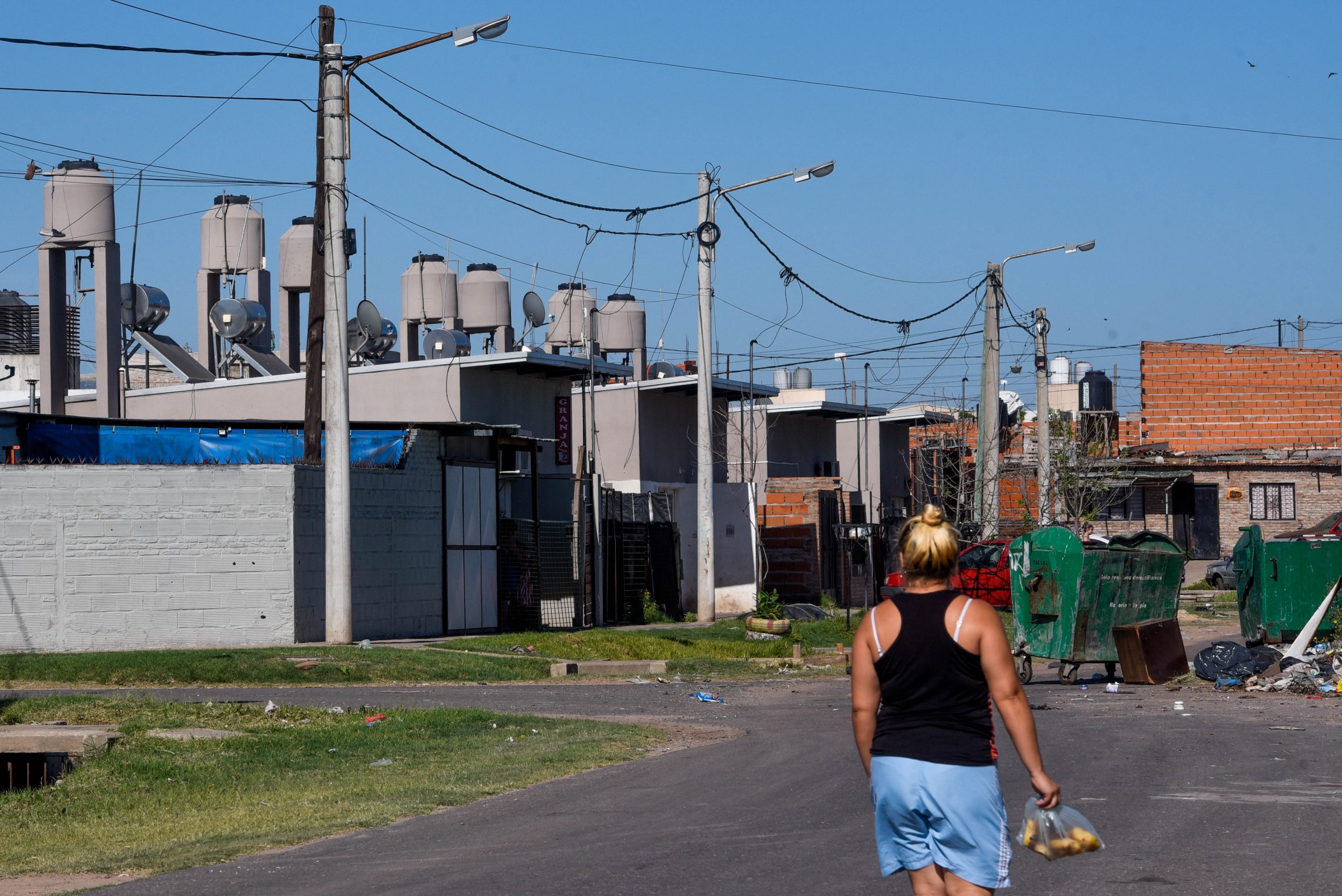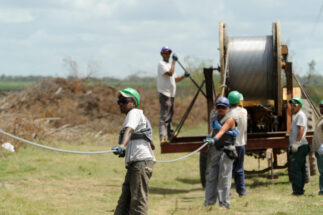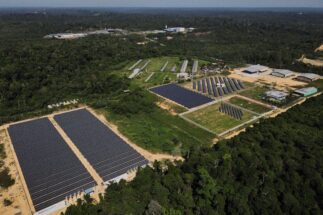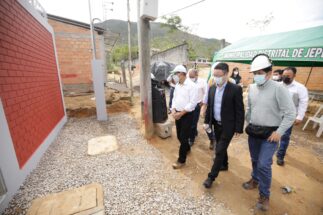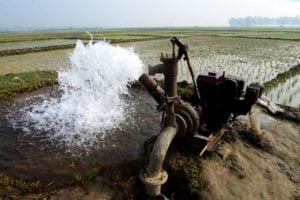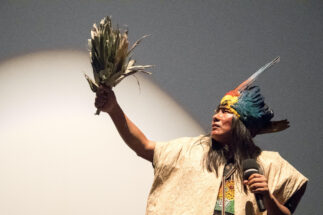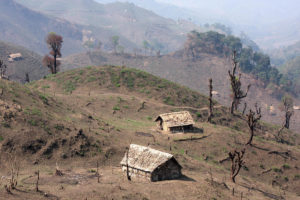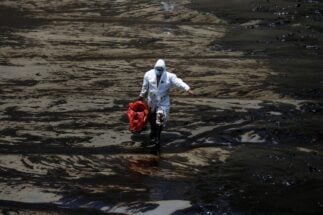On the outskirts of Rosario, Argentina’s third largest city, lies Nuevo Alberdi, the neighbourhood where sisters Lorena and Elizabeth Ayala live, and where many residents still struggle with access to essential services such as electricity.
The 460 families living in Nuevo Alberdi have had to build their own infrastructure to access electricity or connect to the national grid, doing so in often illegal and dangerous ways.
“I share electricity with my brother-in-law and a neighbour,” Lorena told Diálogo Chino. “We share because the cables are very expensive and we bring them from far away. We had to buy the pole and the cables and rent a ladder, everything.”

Lorena and Elizabeth’s experiences in a vulnerable neighbourhood are typical of the energy poverty that is suffered by around 30% of Argentine households, according to 2018 data compiled by the National Council for Scientific and Technical Research (CONICET).
“Those of us who do not have reliable electricity suffer a lot of problems such as voltage drops, which ruin the few things we manage to have in our homes and damage our appliances,” said Elizabeth. “As we don’t have a voltage regulator, we consume more than we need. It’s the same with gas and water.”

In this context of energy poverty, small-scale renewable energies, such as solar panels, could be part of the solution by providing safer, more cost-effective services, with the added benefit of lower environmental impacts. Several initiatives to bring these developments to vulnerable neighbourhoods are underway in Argentina, but they are currently in the early stages, working at a small scale and generating mixed results, both due to a lack of state support and failures to convince some users.
Energy poverty in Argentina
Energy poverty refers to limitations in people’s access to electricity and other services such as gas, deficits which hinder their right to live with dignity by reducing their access to cooking, lighting and heating for their homes, hygiene and refrigeration.
Pablo Bertinat, director of the Energy and Sustainability Observatory of the National Technological University (UTN) in Buenos Aires, said “there is no single definition” of energy poverty, but that the most widely used indicator is if a household uses more than 10% of its income on energy resources. “It is a limited definition because it relates to income, but does not take into account assets or living conditions,” he added.
Low-income households need more energy to cover the same needs
Rodrigo Durán, a researcher at the National University of Salta, said that the definition of energy poverty should not only take into account the satisfaction of a household’s basic energy needs, but also its capacity for growth and development. According to Durán, the percentage of the population living in energy poverty has risen sharply since 2016 due to successive increases in electricity and gas tariffs.
A 2022 paper on energy poverty and clean cooking in Argentina highlighted that many poor households in urban areas do not have access to mains gas and must instead resort to bottled gas, a more expensive fuel. Similarly, if their electricity access is informal, meaning it is accessed with their own infrastructure, the researchers explain that consumption is higher due to the use of obsolete equipment. Firewood also continues to be used to heat water in many households.
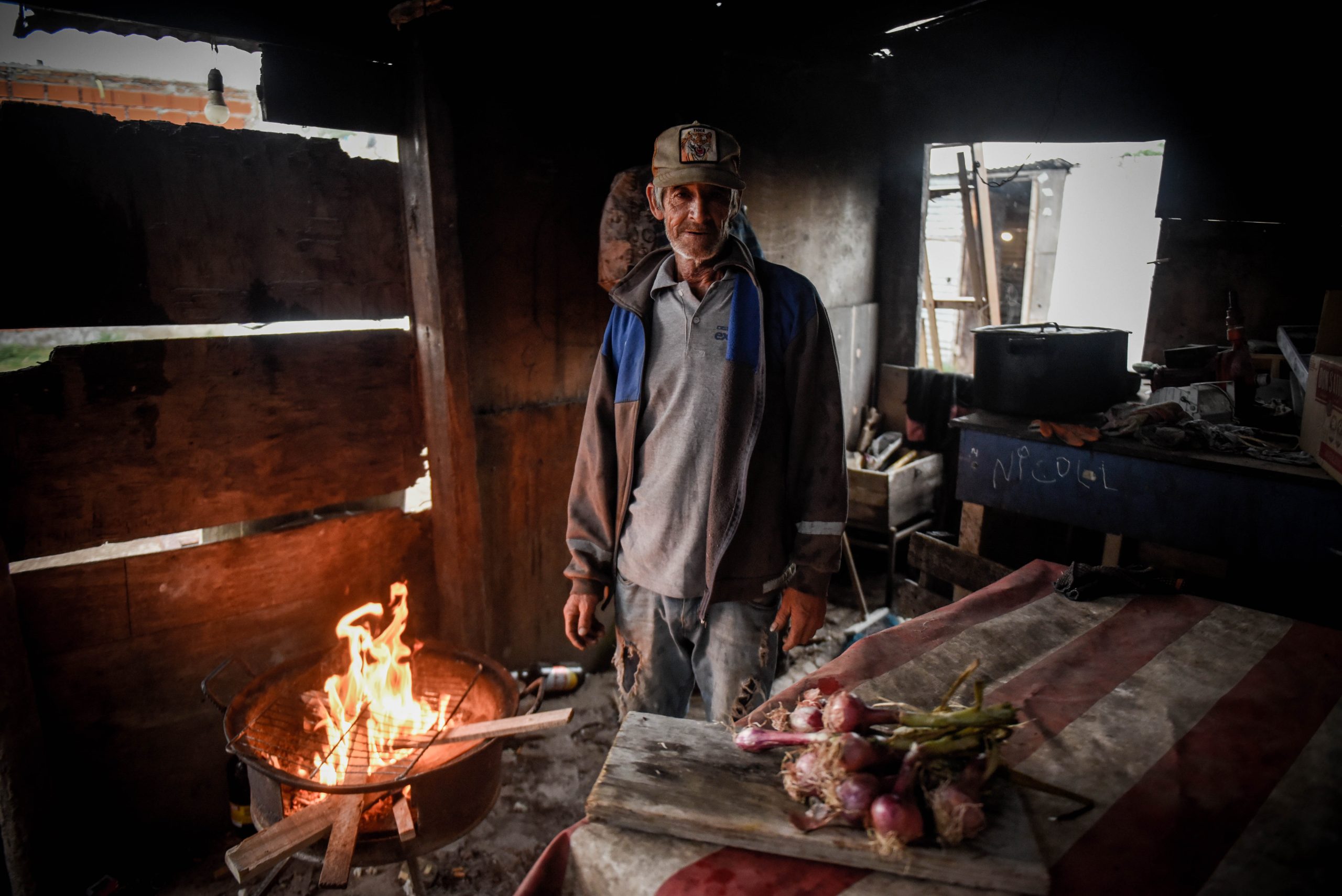
“Low-income households need more energy to cover the same needs,” said Bertinat. “It is more difficult to cool or heat precarious houses because they are not insulated, the cheapest appliances consume more, and bottled gas is more expensive than the gas that comes through the network.”
All this happens in Nuevo Alberdi. “Here the cure is more expensive than the disease,” Lorena Ayala commented, as she cooled off with a sip of tereré, a cold yerba mate-based infusion popular in Argentina during the hot summer months.
Renewables: a solution or false hope?
In Argentina, the government began promoting non-conventional renewable energies, such as solar, wind and biomass, just over two decades ago, and by 2021 they accounted for 12% of the country’s energy mix – one that remains dominated by fossil fuels – falling below government targets to reach 16% of generation from renewables by 2021, 18% by 2023 and 20% by 2025.
Experts agree that these energy sources can provide a lower-cost solution to the lack of access to basic energy services in vulnerable populations, while also bringing the wider added benefit of lower environmental impacts, despite some concerns.
Renewable energies “generate autonomy in local energy generation and lower costs, but this is neither free nor necessarily cheap in environmental terms, as both panels and batteries require minerals,” said Durán. “Even so, the reduction in emissions is considerable in the medium and long term.”
There are already some examples of renewable energies being incorporated into social housing or informal settlements in Argentina, at a small scale for the time being. One of them is Casa Propia (Own House), a social programme of the national government that aims to build, retrofit or upgrade a total of 264,000 homes during the three-year period 2021-23, installing solar-powered water heating systems in 70,000 houses.
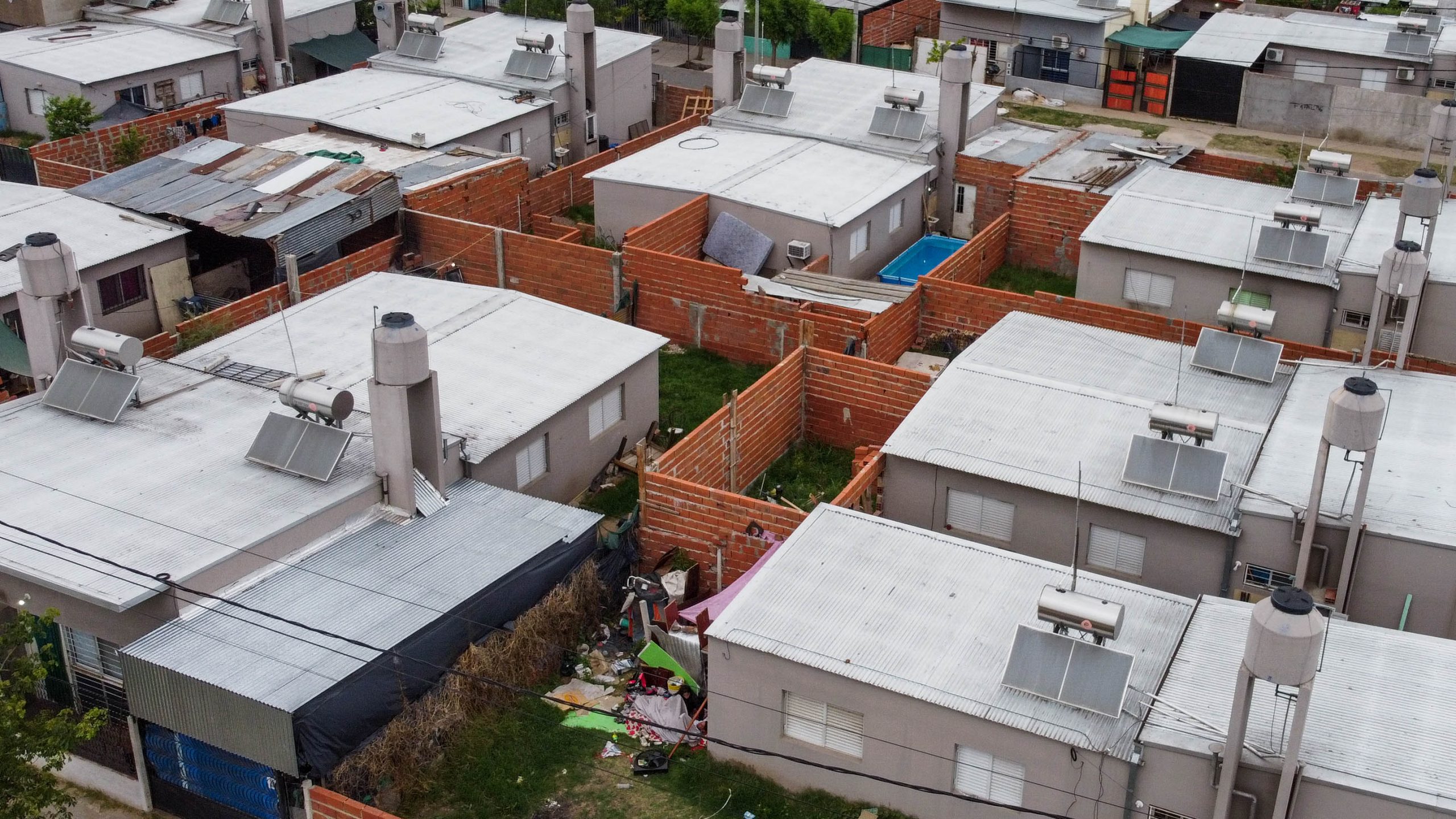
In the Godoy neighbourhood of Rosario, 62 new houses with solar water heaters have already been completed. For their new inhabitants, the results have been mixed. Some residents are satisfied, as their solar equipment has worked well and brought savings, but others have complained as their heaters have stopped working, a problem they have been unable or unsure of how to fix.
Such is the case for Yolanda Benítez, who runs a small business in Godoy selling ice cream and shares her home with two other people. “The heater worked for a year and then it broke, and we don’t know who to call to fix it,” she said. “I’m happy with the house, but I’d like everything to work.”
Fellow resident Miguel Angel Diaz told of the same problem in the house he shares with his two brothers, where the solar heater stopped working some time ago: “We never had it fixed because we don’t know who to call, so now we heat the water on a gas cooker.”

Anabel Sosa, another resident of this small social housing complex, was luckier. Although the heater burnt out, her household was able to replace it themselves and the appliance works well once more. “It’s good because we pay less for gas and electricity,” she said.
University of Salta researcher Durán said these experiences show that, at the state level, there is still a long way to go before renewable energies can be a concrete solution to energy poverty in Argentina, since in addition to manufacturing and installation, it is necessary to make progress in education and project monitoring. “Sometimes the tool arrives, but it is misused or poorly monitored, and this poses a classic problem, which is the lack of consideration of the person who benefits from these tools,” he said.
“We have to think of a policy of access to safe energy within a framework of social development and move away from market criteria which only take costs into account,” Durán added.
Renewables in a vulnerable neighbourhood
On the outskirts of Bahía Blanca, a city in the south of Buenos Aires province, a pilot programme is underway in a neighbourhood called 9 de Noviembre that aims to equip deprived households with solar collectors, the devices used to heat water for domestic use.
Maria Ibañez is a researcher at the Institute of Economic and Social Research of the South and worked on the management of the project, which was completed earlier in March 2022. She explained that the water heated by the solar collectors cannot be used for boiling food, but is suitable for bathing, washing dishes and laundry.
We have not noticed a change in habits that would substantially improve situations of energy deprivation
An innovative aspect of the project is that the beneficiaries of the programme take part in the construction, installation and monitoring of the solar collectors. “We held 12 workshops with interested families because we wanted the beneficiaries to be involved from the very beginning,” Ibañez said. In total, six collectors were installed in homes and two at a local church organisation.
What was her final assessment of the project? Ibañez said that, despite having held specific workshops on the repair or maintenance of the devices, some community members showed a “passive attitude” to these new technologies, one that is difficult to overcome. This, she said, is what needs to be worked on in order to make progress in the uptake and use of renewables.
“The families involved have not stopped burning wood and continue to use an informal connection to the electricity grid,” Ibañez explained. “We have not noticed a change in habits that would substantially improve their situation of energy deprivation.” Some households, she added, have a habit of collecting firewood or using bottled gas that is very difficult to change.
